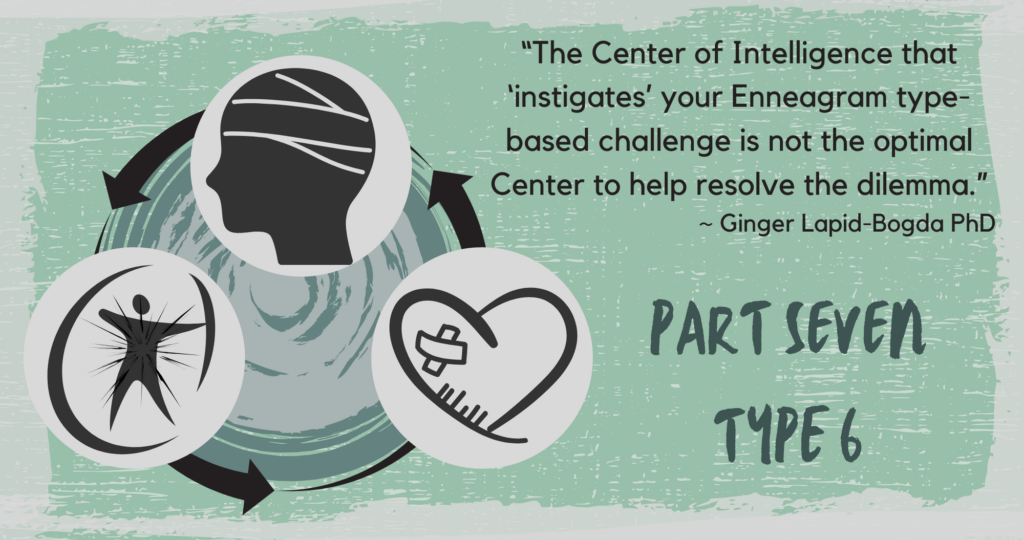 Although this statement may sound counter-intuitive, over years of working with people and groups on the Enneagram-based development, this has proven to be more accurate than not. Of course, working with the Center of Intelligence that instigates the challenging dynamic can be effective, it is simply more difficult. If the Head Center is the instigator, can the Head Center easily change course? To clear the Mental Center, soothe the Heart Center, or calm or embody the Body Center, another Center of Intelligence can be called into service to help support the desired growth and transformation.
Although this statement may sound counter-intuitive, over years of working with people and groups on the Enneagram-based development, this has proven to be more accurate than not. Of course, working with the Center of Intelligence that instigates the challenging dynamic can be effective, it is simply more difficult. If the Head Center is the instigator, can the Head Center easily change course? To clear the Mental Center, soothe the Heart Center, or calm or embody the Body Center, another Center of Intelligence can be called into service to help support the desired growth and transformation.
This 9-nine-part blog series will clarify this developmental idea for each of the 9 Enneagram types, with this blog focusing on Enneagram type Six.
A common type Six development area
Continuous worrying
Try suggesting to Sixes that they stop worrying or worrying so much. It doesn’t work very well, and Sixes may respond by becoming defensive, explaining why they are worrying, and arguing with you about why their worry is valid. This is not fun for anyone. In addition, internally, Sixes may start feeling as if they can’t really trust you in sharing what they are thinking and feeling. In other words, you are not on their side! And once Sixes start to distrust another person and/or feel angry with them, regaining trust can become a major challenge.
All the above being reasonably accurate, most Sixes would actually like to worry less. The part of their concern and worry they do like is how it can help them become effective, creative problem solvers, and they like solving problems. Too much ruminating about ‘what ifs’ and alternative scenarios derails them from trusting their decisions and taking action. It is also stressful to continuously worry. But continuous worrying is a habit of mind and heart in Sixes, which is why it is difficult for them to stop the cycle.
Although worry, a version of fear, most often begins in the Mental Center with a thought or multiple thoughts, for Sixes, the Heart Center also activates and does so extremely quickly with a flurry of emotions related to the thoughts. So while the Head Center is the primary ‘instigator’ of the continuous worry in Sixes (and the rest of us as well), in Sixes, the Heart Center becomes quickly complicit. Thus, the Center that can be most helpful in breaking this particular pattern is the Body Center.
The simplest and most direct way to interrupt the above pattern of continuous worry is to take a walk in such a way that the Body Center becomes fully engaged. Sitting or standing still does not engage the full body unless the person is doing a somatic embodiment practice. However, moving while walking, especially outside where there is ample sensory stimulation and room to move freely in space, allows the Body Center full expression and expansion. Go for a walk where the experience of walking and being in an externally stimulating environment activates the sensory experience, calms both the heart and mind and refocuses attention to the Body (somatic) Center.
Ginger Lapid-Bogda PhD, author of eight Enneagram books, is a speaker, consultant, trainer, and coach. She provides certification programs and training tools for business professionals around the world who want to bring the Enneagram into organizations with high-impact business applications. TheEnneagramInBusiness.com | ginger@theenneagraminbusiness.com

Comments are closed.